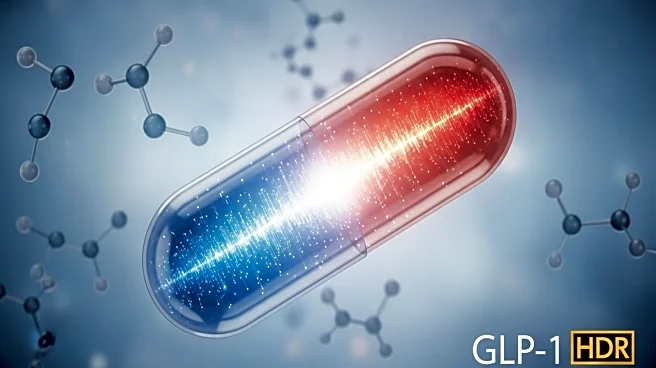What's Happening?
Researchers at Stanford University and Baylor College of Medicine have identified a metabolite called Lac-Phe that naturally suppresses appetite following intense physical activity. The study, conducted on mice, revealed that Lac-Phe inhibits specific neural triggers responsible for feeding behaviors. This discovery opens up possibilities for developing new weight management treatments that mimic this natural mechanism. The research highlights how Lac-Phe interacts with brain regions that regulate hunger and body weight, potentially offering a new approach to weight loss beyond traditional calorie burning.
Why It's Important?
The identification of Lac-Phe as a natural appetite suppressant could revolutionize weight management strategies. If similar effects are observed in humans, it could lead to the development of drugs that help control appetite and manage obesity more effectively. This could have significant implications for public health, particularly in combating obesity-related conditions such as diabetes and heart disease. The research also underscores the importance of understanding the molecular mechanisms behind appetite regulation, which could pave the way for more targeted and efficient treatments.
What's Next?
Further research is needed to explore Lac-Phe's effects in humans and its potential for drug development. Scientists are investigating how Lac-Phe works at the molecular level and its interaction with brain cells that regulate hunger. If successful, this could lead to the creation of a drug that mimics Lac-Phe's appetite-suppressing effects, offering a novel approach to weight management. The ongoing studies aim to validate these findings and assess their applicability in human treatments.
Beyond the Headlines
The discovery of Lac-Phe raises ethical considerations regarding the development of drugs that alter natural appetite mechanisms. It also prompts discussions on the long-term effects of such treatments on human health and behavior. As research progresses, it will be crucial to address these concerns and ensure that new treatments are safe and effective.











